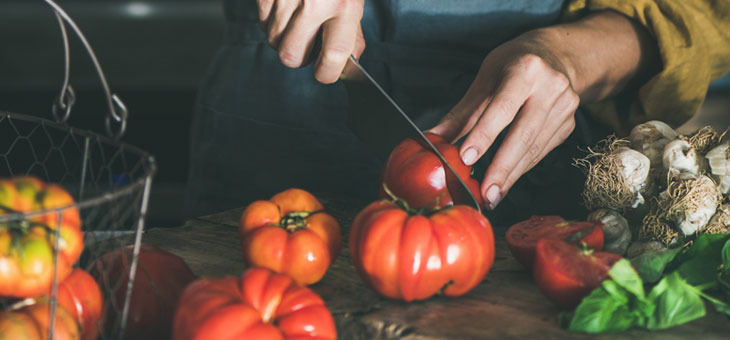I’m working from the spare bedroom at home. It’s a beautiful day, but I’m craving fresh fruit.
The good thing is that throughout the panic buying that got the COVID-19 pandemic off to a frightful start, the shelves of fresh produce at most stores were well stocked.
Anyway, I’m about to send hubby to the local fruit and vegie shop with a big order, but is it safe to buy fresh produce right now? And how to make sure that produce lasts as long as possible so we don’t need to go again in three or four days’ time?
Fortunately, my local fruit shop has supplied disposable gloves for customers to put on as you enter so you can handle fruit as hygienically as possible. Who doesn’t like to slightly squeeze an avocado or a peach to see how ripe it is?
If your fruiterer does not have disposable gloves, take your own and dispose of them as you leave.
Now, and always, make sure you wash items before use. And even though we know the skins of many items are packed with nutrients, consider peeling during this time.
Knowing which fruits and vegies last longer – and how they should be stored – is vital to avoid throwing away ‘money’ (read rotten produce) in the compost bin.
Produce to store
Onions, garlic, potatoes, sweet potatoes, whole pumpkins and ginger can be stored in a cool dark spot for weeks. Some of these may sprout at the end of winter but you’re safe at this time of the year.
A great way to store ginger is to wash and peel it, then cut it into chunks. Put as much as will fit into a clean jar and fill it to the top with dry sherry, or any sherry. The cheaper the better. Seal and store in the pantry until you need it. It will last for ages, if you don’t double dip.
And just those few items – plus a few herbs and spices – can be made into delicious soups.
Try this Budget Potato Soup with Onion Scones and make extra quantities to freeze for later.
Produce to store in the fridge
Leafy greens such as lettuce, rocket, spinach, silverbeet, kale and bok choy should be stored in the fridge and used before they go limp or yellow when their nutrition value is dropping. It’s a similar situation for:
- cruciferous vegetables, such as cauliflower, broccoli and cabbage
- capsicums, cucumbers
- fresh herbs
- carrots
- zucchini
- mushrooms (store in the fridge in a paper bag)
- celery
- beetroot
- leeks
Produce not to store in the fridge
- bananas
- tomatoes
- lemons and limes
East fresh
- apples
- berries
- bananas
- melon
- avocadoes
- tomatoes
- other fresh fruit in season (avoid imports)
When packing your fridge, be sure produce is dry and allow for adequate space between items to promote better air circulation.
Whatever you buy, try to ensure it is local and in season. There is no good reason to buy mangoes from Mexico and asparagus from Peru. Just wait until produce that is grown here in Australia is ready for purchase.
And check whether your local store does home deliveries. Supermarkets, of course, have that service available.
What tips do you have for buying and storing fresh produce?
If you enjoy our content, don’t keep it to yourself. Share our free eNews with your friends and encourage them to sign up.
Related articles:
How to fight the coronavirus
What is wellness travel?
Fears fuel a need to be green

